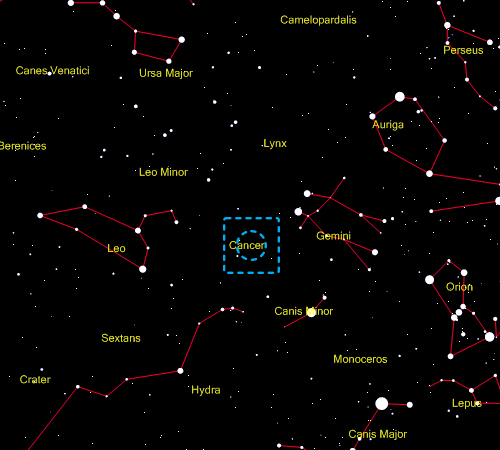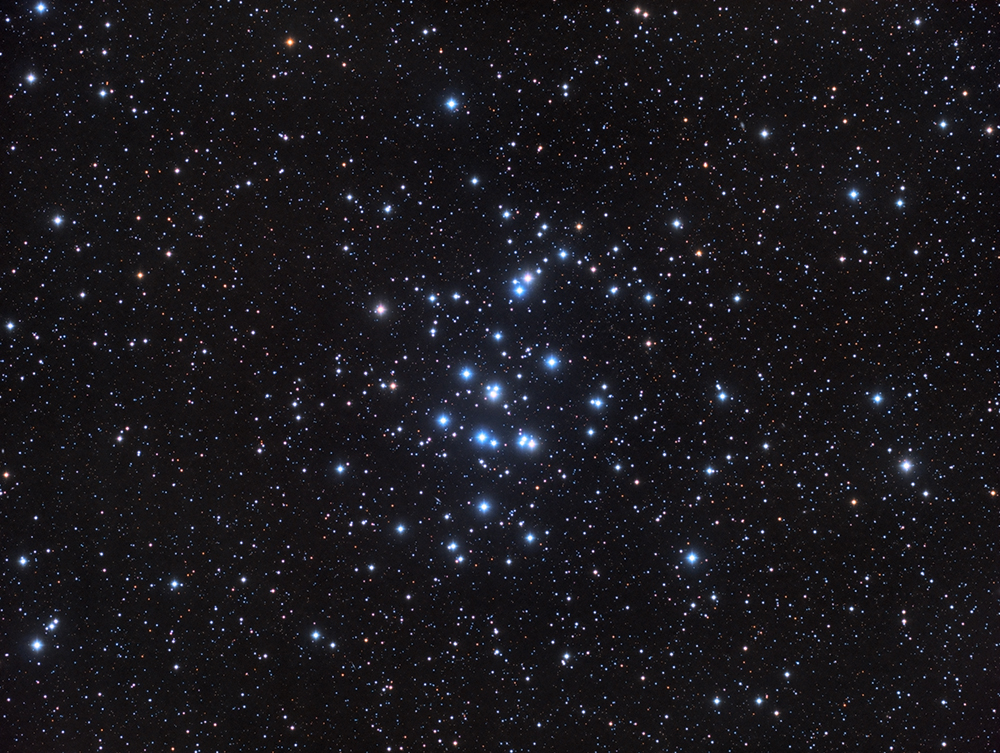M44, The Beehive Cluster in Cancer, is an open cluster about 580 light years away from Earth, making it one of the closest open clusters to our solar system. It is visible to the naked eye as a fuzzy patch. Galileo was the first to observe the cluster through a telescope in 1609 and resolved around 40 stars. Messier added the fuzzy patch not to be confused as a comet to his catalogue as the 44th entry in 1769. The ancient Greeks and Romans saw the cluster as the manger from which two asses, the stars Asellus Borealis and Asellus Australis, are eating, hence it's alternative name 'Praesepe', Latin for manger. The ancient Chinese astronomers saw the cluster as a ghost riding in a carriage and likened its appearance to a cloud of pollen blown from willows!
The cluster's proper motion and age, around 600 million years, match those of the nearby Hyades, suggesting that the two clusters share a similar origin. Strangely, it is possible to see the Hyades in The Beehive, with the familiar 'V' shape very obvious in the centre of the cluster. Like many star clusters, The Beehive Cluster has experienced mass segregation. This means that bright, massive stars are concentrated in the cluster's core, while dimmer, less massive stars populate its corona. The cluster's core radius is about 8 light years. Altogether, the cluster contains at least 1000 gravitationally bound stars, resulting in a total mass of between 500 and 600 solar masses.
In September 2012 two planets, Pr0201b and Pr0211b, orbiting separate stars, were discovered in the cluster using a 1.5 metre Tillinghast telescope at the Smithsonian Astrophysical Observatory’s Fred Lawrence Whipple Observatory in Arizona. Measurements were made of the slight gravitational wobble the orbiting planets induce upon their host stars. The discoveries are what have been termed Hot Jupiters, massive gas giants that orbit close to their parent stars. They are expected to be in the Beehive cluster because stars in the cluster contain many heavier elements than are found in the Sun, such as iron.
An interesting feature of this image is the presence of several galaxies. If you look closely at the deep background of the cluster, it is possible to make out some very distant galaxies. How many can you spot?! |


